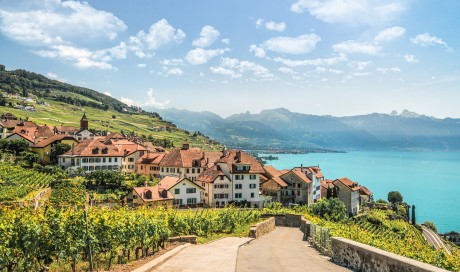Within yards of the wall are two Muslim holy places, the Dome of the Rock and the Al-Aqsa Mosque, which was built in the 8th century. Muslims regard the site as the third holiest in Islam, after Mecca and Medina. The city is also a pilgrimage site for Christians, who revere it as the place where they believe Jesus Christ preached, died and was resurrected.
WHAT IS THE CITY’S MODERN HISTORY AND STATUS?
In 1947, the United Nations General Assembly decided the then British-ruled Palestine should be partitioned into an Arab state and a Jewish state. But it recognized that Jerusalem had special status and proposed international rule for the city, along with nearby Bethlehem, as a ‘corpus separatum’ to be administered by the United Nations.
That never happened. When British rule ended in 1948, Jordanian forces occupied the Old City and Arab East Jerusalem. Israel captured East Jerusalem from Jordan in the 1967 Middle East war and annexed it in a move not recognized internationally.
In 1980 the Israeli parliament passed a law declaring the “complete and united” city of Jerusalem to be the capital of Israel. But the United Nations regards East Jerusalem as occupied, and the city’s status as disputed until resolved by negotiations between Israel and the Palestinians. The king of Jordan retains a role in ensuring the upkeep of the Muslim holy places.
DOES ANY OTHER COUNTRY HAVE AN EMBASSY IN JERUSALEM?
Guatemala will move its embassy from Tel Aviv to Jerusalem on May 16 and Paraguay later this month.
Netanyahu said in April “at least half a dozen” countries were now “seriously discussing” following the U.S. lead. He did not identify them.
In December, 128 countries voted in a non-binding U.N. General Assembly resolution calling on the United States to drop its recognition of Jerusalem as Israel’s capital. Nine voted against, 35 abstained and 21 did not cast a vote.
WHAT IS LIKELY TO HAPPEN NEXT? HAS JERUSALEM BEEN A FLASHPOINT BEFORE?
Since the announcement there has been tension, with Palestinian protests in Jerusalem, Gaza and the West Bank. More than 40 Palestinians have been killed by Israeli troops in Gaza during a six-week border protest.
That protest culminates on May 15, a day Palestinians traditionally lament homes and land lost as Israel was created in 1948, given extra significance this year because it falls on the day after the U.S. Embassy move.
Although clashes between Palestinian protesters and Israeli forces have not been on the scale of the first and second Palestinian intifadas in 1987-1993 and 2000-2005, violence has erupted before over matters of sovereignty and religion.
In 1969 an Australian Messianic Christian tried to burn down the Al-Aqsa Mosque, causing damage. So charged was the Middle East’s political climate - just two years after the Six Day War - there was fury across the Arab world.
In 2000, Israeli politician Ariel Sharon, then opposition leader, led a group of Israeli lawmakers onto the Temple Mount/al-Haram al-Sharif complex. Palestinians protested and there were clashes that quickly escalated into the second Palestinian uprising, known as the Al-Aqsa Intifada.
Deadly confrontations took place last July after Israel installed metal detectors at the entrance to the complex after the killing of two Israeli policemen by Arab-Israeli gunmen.
Arab leaders across the Middle East have warned that a unilateral American move could lead to turmoil and hamper U.S. efforts to restart long-stalled Israeli-Palestinian peace talks.
Share This Post














